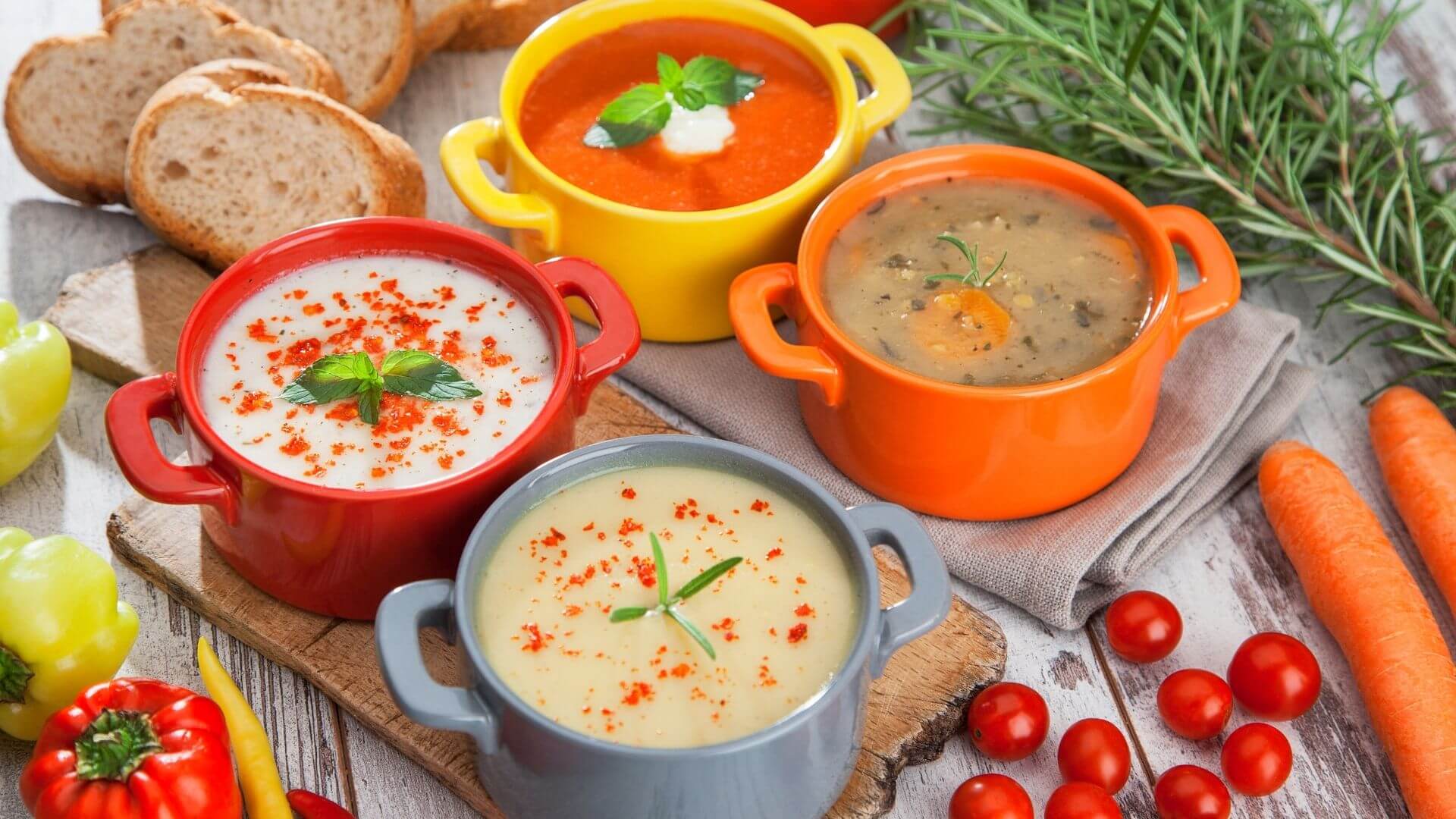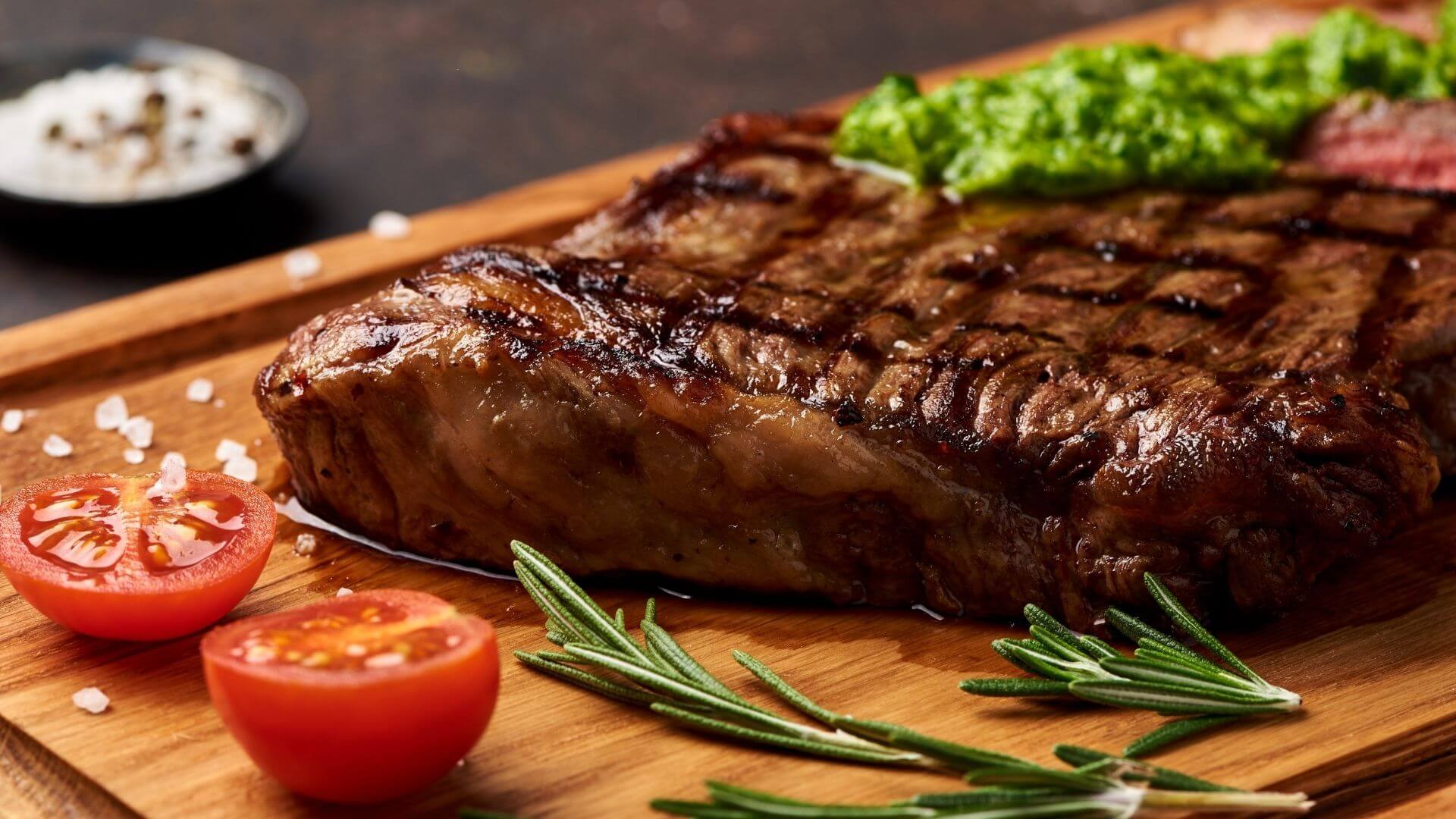Turkish cuisine is grounded in grains like rice and wheat, as well as vegetables, with each dish typically featuring one or two main ingredients. Turks prefer dishes that highlight the natural taste of the main ingredient rather than masking it with sauces or spices. Spices and herbs are used sparingly, such as mint or dill with zucchini, parsley with eggplant, and cumin in dishes like red lentil soup or meatballs. Lemon and yoghurt are often used to enhance flavours and balance dishes. Desserts and fruit dishes typically don’t contain spices, allowing their tastes to stand out. Meatless dishes are common, and when meat is used, it’s sparingly, with bread and vegetables often being the main focus.
Food venues are just as important as the meals themselves, so it’s crucial to consider places where you can find ingredients and dining customs. Weekly neighbourhood markets and permanent markets, like the famous Spice Market in Istanbul, offer a wide range of food items.
The Most Characteristic Features That Separate Turkish Cuisine from Other Cuisines
What sets Turkish food apart is its unique blend of tastes from various cultures, reflecting centuries of cultural exchange. While it shares similarities with neighbouring cuisines, Turkish dishes have a distinct identity shaped by Ottoman expansion and the introduction of new spices and cooking techniques. Whether enjoyed in the West or East, Turkish cuisine offers a delightful fusion of tastes, from Greek-inspired salads to aromatic kebabs and spiced rice dishes. Factors like regional climate, trade routes, and religious influences contribute to the diversity of Turkish cuisine, resulting in a culinary landscape affluent in essence and traditions. Overall, Turkish cuisine stands out for its ability to blend tradition with innovation. You can go and have a taste of Turkish cuisine in Mississauga at Mama Fatma, a Turkish restaurant in Toronto.

Which Cultures Have Similar Characteristics to Turkish Cuisine?
Turkish food shares many similarities with neighbouring cultures, creating a diverse culinary landscape. Countries in the Balkans, like Greece and Bulgaria, have similar dishes such as grilled meats and savoury pastries. Middle Eastern cuisines, including those of Syria and Lebanon, feature comparable ingredients like lamb and aromatic spices, resulting in dishes like kebabs and pilafs. Central Asian culinary traditions, such as those from Uzbekistan, share ingredients like grains and yoghurt-based sauces with Turkish cuisine. Despite their unique identities, these cultures share common ingredients and cooking methods, reflecting centuries of cultural exchange and historical connections.
Features of Turkish Cuisine Soups
Today, soup remains a staple in Turkish culture, with tradesmen’s restaurants serving it as a customary starter. In Ottoman cuisine, soup was a staple dish in almshouses, catering to those in need. Turkish cuisine offers a wide range of soups, from classic lentil soups to more elaborate wedding soups. These soups are simple, flavorful, and nutritious, often enriched with collagen-rich bone broth and legumes like lentils and chickpeas. Ingredients like wheat, rice, bulgur, and homemade noodles can also transform soups into hearty meals. Yoghurt-based soups are unique to Turkish cuisine, with a vast variety of tarhana soups showcasing regional flavours and ingredients. A final touch of sizzling hot butter or clarified butter with herbs or spices adds an extra layer of spice to these tasty dishes, making them a symbol of Turkish hospitality.

Features of Turkish Cuisine Meat Dishes
Meat dishes are a fundamental aspect of Turkish food, offering a wide variety of flavours and cooking techniques. At a Turkish kebab house, you can find traditional Turkish meat dishes featuring lamb, beef, and chicken. Turkish meat dishes include popular kebabs such as shish, Adana, and doner, seasoned and grilled. In each dish, spices are used. Spices like cumin and paprika, complemented by fresh herbs such as parsley and mint boost tastes.

Features of Turkish Cuisine Vegetable Dishes
Thanks to the abundant geography and climate, Turkish cuisine presents a lot of vegetable dishes. Renowned for their digestibility and nutritional value, these dishes encompass a diverse range of recipes, both raw and cooked. From sunflower to olive oil, Turkish vegetable cuisine incorporates local ingredients to elevate flavour. Fruits are also occasionally featured, adding a special touch to classics like quince stew.

Features of Turkish Cuisine Pastries
Turkish cuisine offers a variety of savoury and sweet pastries that are essential to its culinary heritage. These pastries often feature layered dough, a technique influenced by the nomadic Central Asian Turks. Börek, a popular type of salty pastry made with yufka (thicker phyllo dough), comes in various forms such as su böreği filled with cheese and parsley. Other pastries include çiğ börek (fried with minced meat), gözleme (filled with ingredients like spinach or cheese), and lahmacun. Pide is often filled with minced meat or vegetables.
Turkish Cuisine Drinks Features
Turkish cuisine has a lot of drinks with distinct tastes and cultural significance. Turkish coffee is known for its strong taste and thick texture, often enjoyed during social gatherings. Ayran, a yoghurt-based drink, offers a refreshing option to accompany meals, especially rich dishes. Turkish tea, served hot in small glasses, is a symbol of hospitality and is commonly enjoyed throughout the day in tea houses. These beverages play a central role in Turkish culture, providing both refreshment and a sense of tradition.

Features of Turkish Cuisine Desserts
Turkish cuisine offers a range of desserts, and Turkish delight is a standout favourite. Turkish deligh, also known as “lokum,” it’s a sweet treat made with sugar, starch, and flavourings like rosewater or nuts. With its chewy texture and various tones, Turkish delight is enjoyed as a snack or paired with Turkish coffee. Another popular treat is künefe, a pastry filled with cheese and soaked in syrup.

The Most Famous Turkish Regional Cuisines in Turkish Cuisine
In Anatolia, kebabs are beloved, while the Aegean coast favours seafood and olive oil dishes. The Black Sea region enjoys hearty meals with cornbread and anchovies, and the Southeast relishes spicy kebabs and grain-based dishes. Along the Mediterranean, fresh produce and grilled meats take centre stage, paired with vibrant mezze platters.

Why Turkish Food Tastes Better With Natural Ingredients
Have you ever wondered why a simple tomato and cucumber salad in one place can taste so much more vibrant and alive than in another? The answer, more often than

A Guide To Turkish Food For First-Time Visitors In Canada
Welcome. If you’ve ever walked past a Turkish restaurant and been captivated by the rich aromas of grilled meats and fresh spices but felt a little unsure about what to

Turkish Food Traditions For Weekend Family Meals
There’s a certain kind of magic that happens on weekends. The workweek hustle fades, and a different rhythm takes over—one that revolves around family, laughter, and, most importantly, food. In

How To Choose The Perfect Turkish Dessert After Dinner
After a glorious meal of savory kebabs, fresh mezes, and warm pide, there’s one final, sweet decision to make. It’s the moment when the conversation quietens and everyone turns their

Why Turkish Cuisine Is Perfect For Winter Evenings
When the cold winds start to blow and the days grow shorter here in Toronto, Ontario, there’s a natural craving for warmth and comfort. We seek refuge not just in

Discovering Turkish Pide Toppings Beyond Cheese
When you hear the word “flatbread,” you might immediately think of pizza. But let me introduce you to its delicious and ancient cousin: Turkish Pide. Pide is a culinary masterpiece,


